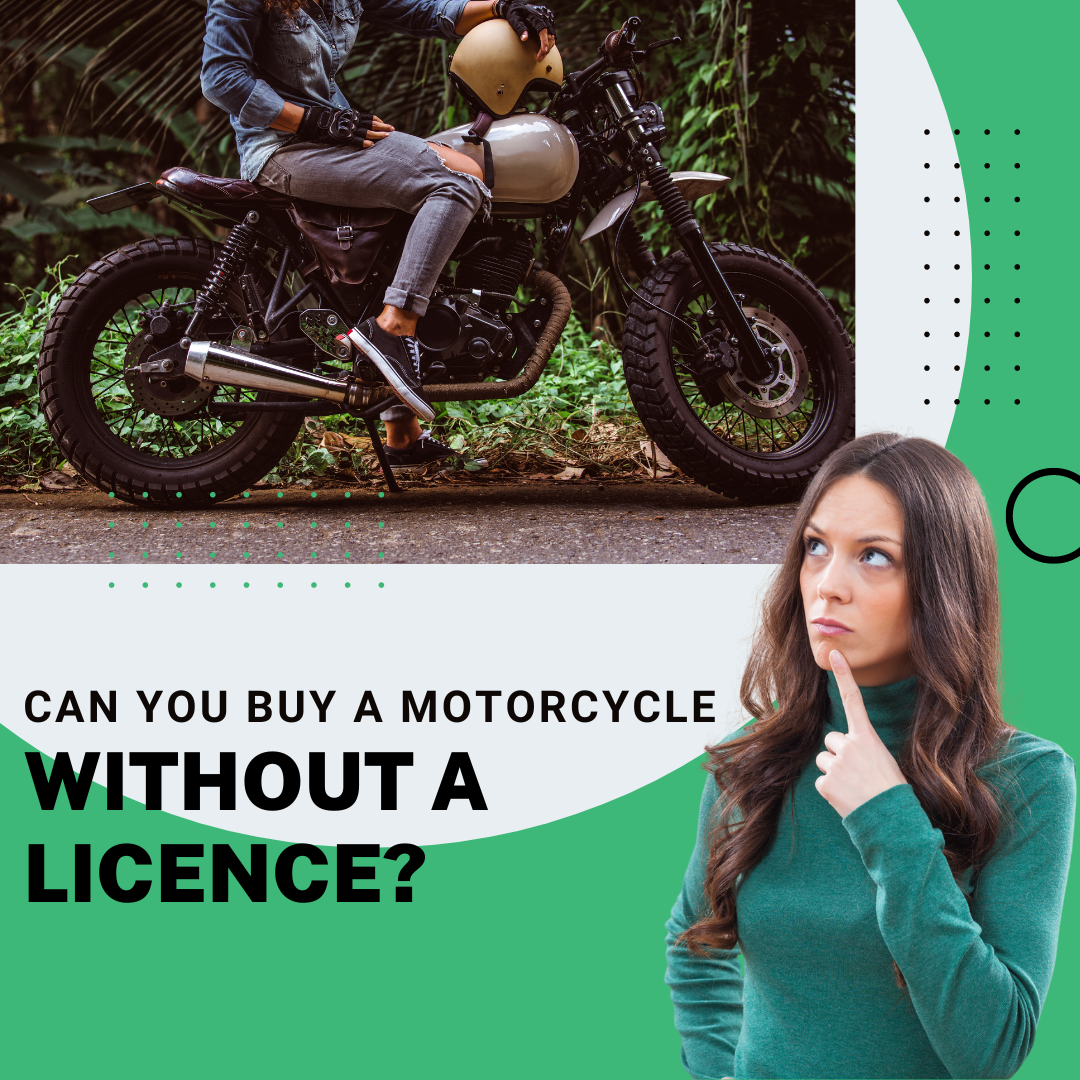
So, you're intrigued by the idea of cruising through the open road on a motorcycle or weaving through traffic on a snappy moped?
But wait, before you rev that engine and feel the wind against your face, there's a legal and essential step you have to take in the UK:
Completing your Compulsory Basic Training (CBT). Now, what exactly is it and why is it so important?
Don't fret; we're here to demystify it for you.
Why CBT is a Legal Requirement
Imagine hitting the open road without knowing the first thing about road safety or the proper way to handle a motorbike.
Sounds dangerous, right?
That's where CBT comes in. It’s not just another bureaucratic hoop to jump through; it's a safety net for you and others on the road.
It's a legal requirement in the UK if you want to ride a motorcycle or moped unaccompanied. So, yes, you can't dodge this one!
Age Restrictions
While this article is mainly geared towards adults, it's worth mentioning the age restrictions that come with CBT for the benefit of younger readers or parents exploring this avenue for their teens.
Moped Riders
For mopeds, you can start your CBT training at 16, allowing you to legally ride on UK roads.
For motorcycles, you can begin at 17 under a provisional licence.
This allows you to ride a bike with an engine size up to 125cc. However, you'll be restricted to 'L' plates until you progress to a full motorcycle licence.
For parents or guardians, CBT offers a structured, safe environment for young riders to learn essential skills and attain a strong sense of safety and well-being.
Motorcycle Riders
For motorcycles, you can start your CBT at 17. This allows you to ride a bike with an engine size up to 125cc.
However, you will be restricted to 'L' plates until you progress to further licensing.
Parental Guidance
For parents or guardians reading this, CBT offers a structured, safe environment for young riders to learn essential skills.
The course instills a strong sense of responsibility and safety awareness, crucial for any new rider but especially for younger ones.
So there you have it. Age doesn't have to be a barrier; it's more about skill, awareness, and the willingness to learn.
Whether you're a teenager just starting out or an adult looking for a new adventure, CBT is your first step toward motorcycling freedom.
Who’s Qualified to Train You?
If you’re thinking about saving some quid by having a mate teach you, think again.
Legal Requirements dictate that only registered Instructors, known as Approved Motorcycle Instructors (AMIs), can offer CBT.
These individuals have been vetted, trained, and certified to ensure they can teach you the necessary skills and safety awareness effectively.
Safety Awareness: Why It’s Non-Negotiable
Let's put it this way: knowing how to operate a motorbike isn’t the same as understanding road safety.
Safety Awareness isn't just about knowing what the buttons and levers do; it’s about anticipating possible dangers and reacting appropriately. CBT modules are crafted to instil this awareness in you.
Preparing for the Big Day
Before you even set foot in the training facility, there's quite a bit you can do to prepare for your CBT standard requirements.
Start by studying the principles that govern motorcycling, and become familiar with traffic signs and hazard awareness.
Consider getting your eyesight test done before the course, as vision is key to safe riding.
Don't forget to carry all the essential safety gear with you.
Ensure that you wear sturdy shoes, gloves, and a durable helmet to meet the safety equipment prerequisites.
First Stop: Classroom Sessions
Before you even put on your safety gear, you're going to hit the books.
Well, not literally, but you will go through Classroom Sessions aimed at Skill Development.
Think of it as the theory behind the practice. You'll cover the basics of road rules and the importance of an Eyesight Test.
These aren't just checkboxes; they’re life skills!
Physical and Mental Preparedness
You might be thinking, "It's just a day of training. How tough can it be?" But don't underestimate the physical and mental demands of a CBT course.
You're not just sitting and listening; you're actively participating, both mentally and physically.
Physical Preparedness
Expect to spend a good chunk of time on your feet, walking around your motorbike, or sitting in a riding position.
You'll need to have decent motorcycling skills, balance, and coordination, as well as enough stamina to make it through the day without feeling like you've run a trip or journey around the globe.
Mental preparedness is crucial too.
A momentary lapse in concentration can result in mistakes, and when you're on a scooter or two-wheeler, mistakes can be costly.
Mental Preparedness
Motorcycling is as much about mindset as it is about skill. You need to be fully attentive and focused throughout the training.
A momentary lapse in concentration can result in mistakes, and when you're on a bike, mistakes can be costly.
Be prepared to absorb new information, react to real-world scenarios, and make quick decisions.
In summary, ensure you're well-rested and mentally alert before you show up for your CBT course.
It will make the experience much more enjoyable and productive.
Module One: Introduction and On-site Training
Element A: Intro and Theoretical Training
No, you won’t be asked to recite Shakespeare. Here, you’ll get an in-depth understanding of Riding Techniques and basic Maintenance.
Still think you can skip the Eyesight Test? Think again! It’s a crucial part of ensuring you’re fit to ride.
Element B: Gear Up!
You can't just hop on a bike in your trainers and jeans. You'll get introduced to Safety Gear and Safety Equipment.
Helmets, gloves, and the works. You'll learn what each piece does and why it’s crucial.
Element C: Let’s Get Practical
Enough talk, let’s ride—safely, of course! This is the Practical Training phase where you'll get hands-on experience.
You’ll learn basic Riding Techniques, like how to stop, start, and manoeuvre your bike.
Module Two: The Road Calls
Element D: On-Road Training
You're not just riding around a training ground anymore. This is the real world.
Here you'll learn Road Rules, how to read Traffic Signs, and develop Hazard Awareness.
It’s like learning to swim but with a whole lot more metal around you.
Module Three: The Final Frontier
Element E: Road Time
This isn't just a quick spin around the block; you’re looking at a minimum of four hours of Practical Training.
Here, Emergency Procedures are also drilled into you because, let’s face it, things can go south.
Tricycles, Anyone?
Oh, you thought CBT was just for two-wheelers? If you fancy riding a Tricycle, the same rules apply :)
Examination and Assessment
Here's the kicker: There's no traditional Examination and Assessment.
Instead, your instructor assesses your skills throughout the course.
If you meet the criteria, voila, you get your DL196 certificate. No scary exam room, promise!
Location and Duration
When you're gearing up to take your CBT motorcycle course, it's not just what you'll learn that's important, but also where and how long you'll be learning it.
CBT objectives include preparing you for a variety of riding conditions, whether on a highway, street, or lane.
The total time you'll spend is influenced by your previous motorcycling experience and your ability to absorb new education.
However, a ballpark estimate would be a full day, or around 6–8 hours.
Some courses might stretch over two days if your trainer feels you need more time to master the components of safe riding.
Costs Involved
You might be asking, "How much is my freedom going to cost me?" Well, that varies.
Different schools charge differently, and sometimes the Safety Gear might even be an extra charge.
Related: Can You Buy A Motorcycle Without A License
Final Certification and What’s Next
Once you've successfully crossed all the T's and dotted the I's, you’ll receive your DL196 certificate. It’s your ticket to the open road for the next two years.
Your Riding Options After CBT
Once you have your DL196 certificate, you can ride a motorcycle, motorbike, scooter, cycle, or even a tricycle if that's what you fancy.
If you're planning to get an AM licence, your CBT will be the first step.
Following this, you may opt for further motorcycle training to advance to a full driving licence.
However, if your goal is to ride mopeds only, your CBT certification will suffice for legally ride[ing] on UK roads.
Re-taking the Course
You've successfully completed your CBT course and have been enjoying the open road for two years.
But alas, all good things come to an end, including the validity of your CBT certification. So, what's the process for renewing it?
You'll need to retake the entire motorcycle training course.
Yes, from Part A, Introduction to CBT to Part E. However, this time around, you'll find the process easier and quicker.
Your instructor will refresh your knowledge, update you on any new road laws or bike handling techniques, and retest your motorcycling skills.
Once complete, you'll get a new DL196 certificate, rekindling your love affair with the UK roads for another two years.
Conclusion
There you have it! Compulsory Basic Training is your first and non-negotiable step toward becoming a motorcycle or moped rider in the UK.
It's designed to equip you with the necessary skills and knowledge, ensuring that you and everyone else on the road stays safe.
So, are you ready to ride?
FAQs
Do I have to renew my CBT certification?
Yes, your CBT certificate is valid for two years. If you opt not to obtain a full motorcycle licence within that time, you'll need to renew your CBT certificate to continue riding legally on UK roads.
Is there an exam at the end of the CBT course?
No, the CBT course doesn't conclude with a formal exam. However, you'll be assessed by your instructor throughout each element of the course. Only when you've demonstrated sufficient skill and understanding will you be issued a DL196 certificate, granting you permission to ride a motorbike or moped unaccompanied.
What happens if I struggle with a certain element during CBT?
If you have difficulty with a specific element, your instructor will provide additional coaching to ensure you meet the CBT objectives. The duration of each element may vary depending on your skill level and understanding. Your trainer will only sign off on each part when they are satisfied you have reached a safe level of proficiency.
Can I ride any motorcycle or moped once I complete the CBT?
No, the type of vehicle you can ride depends on your age. After completing CBT, if you are 16 or older, you can ride a moped. If you're 17 or older, you can ride a motorcycle up to 125cc with a power output of up to 11kW. The CBT doesn't enable you to ride any motorcycle or moped; there are specific age and power restrictions.
Get in Touch 🚀
Loved our article on “What Does Compulsory Basic Training (CBT) Involve?”? Got the itch to dive into more wheely-awesome info?
Whether you're a parent or a grandparent, we're here for all your kids ride-on toy questions! 🚗💨
Feeling click-happy?
Jump straight into our wonderland at RiiRoo.com.
Or, if you're more the chatty type, give our Live Chat a whirl and let's talk toys!







Share:
F1 Drivers Age - How Old Are F1 Drivers?
How Are You Preparing For Autumn/winter Energy?